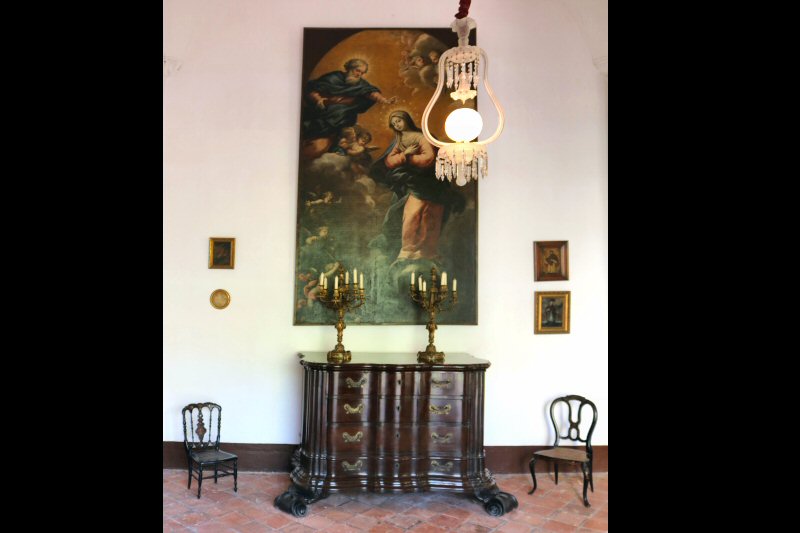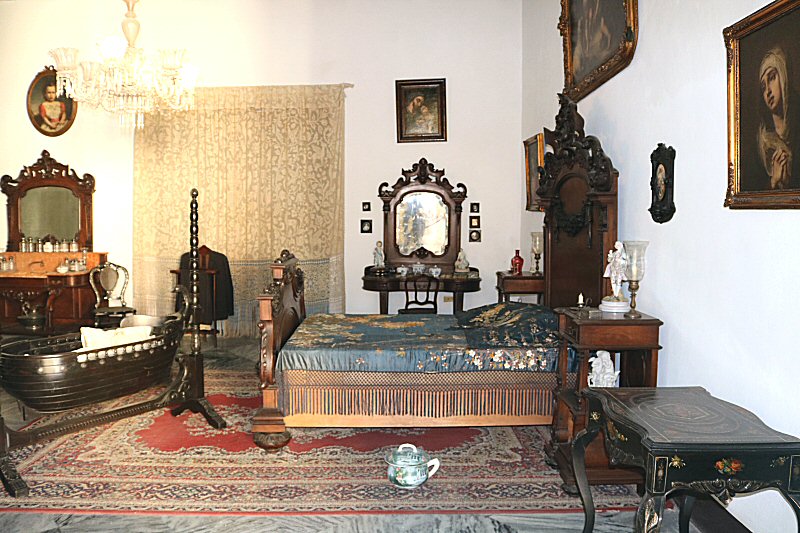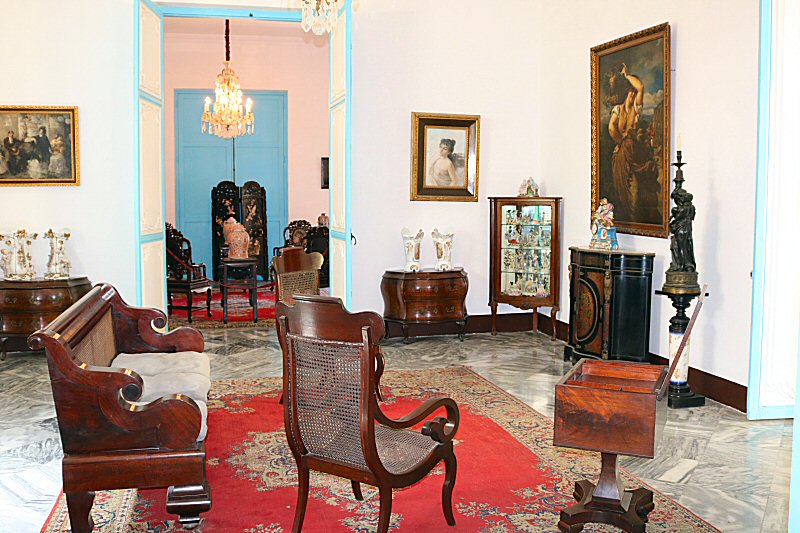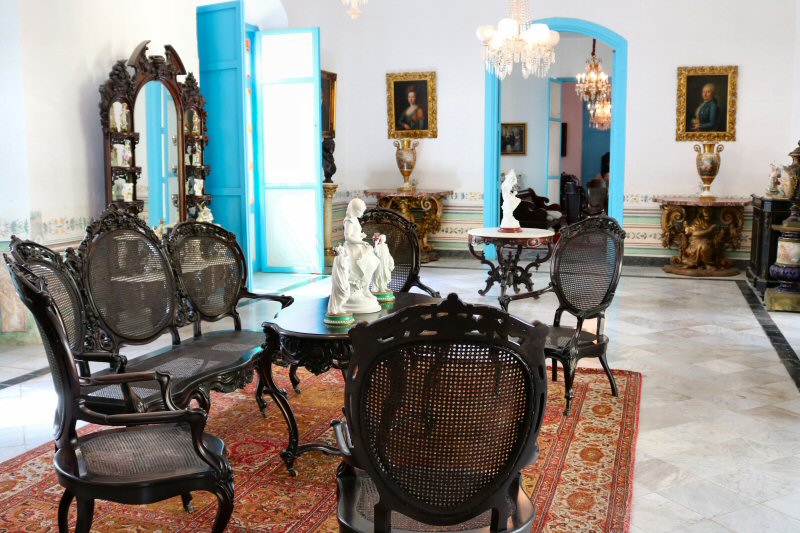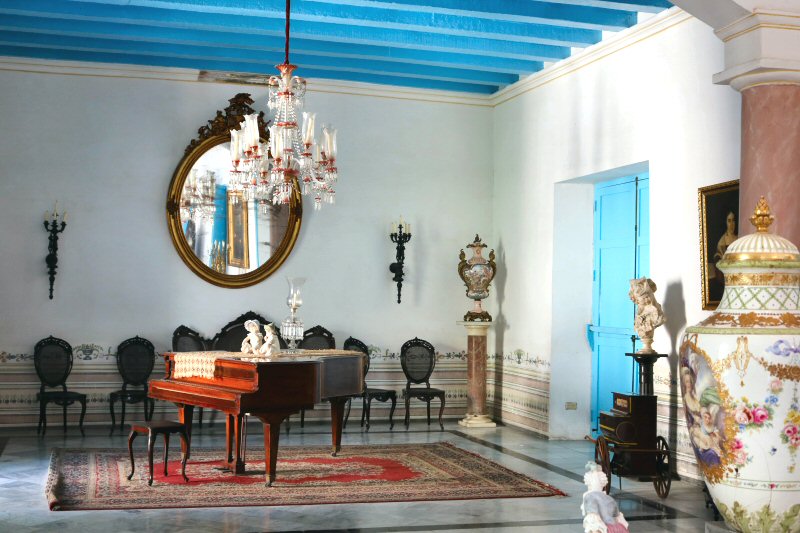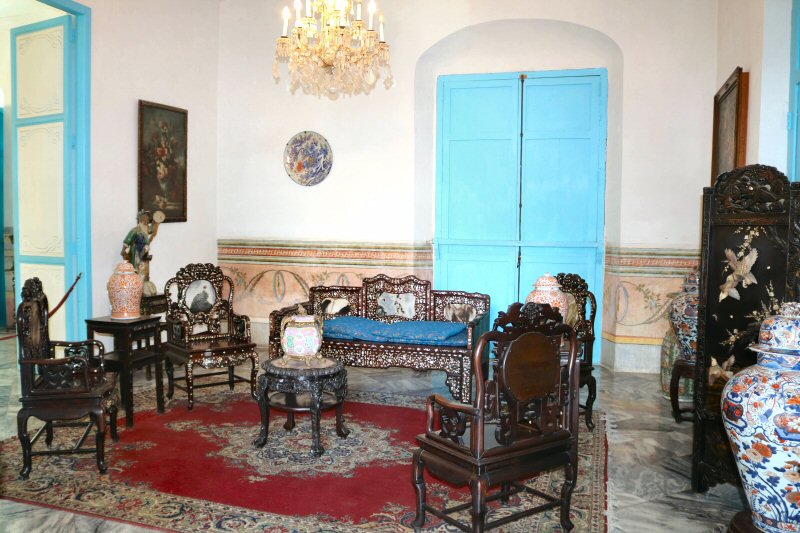
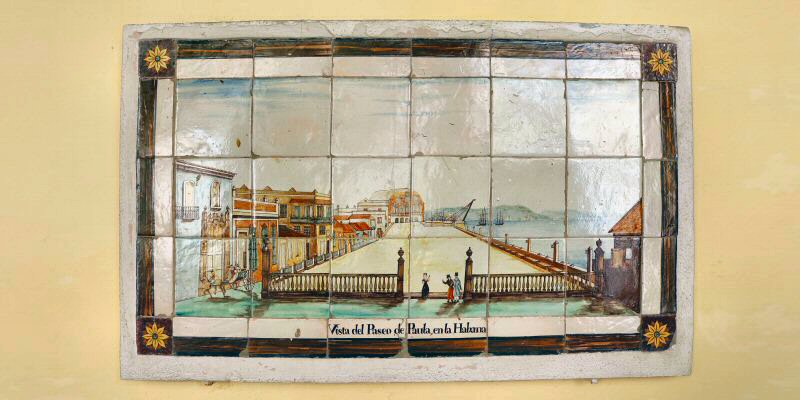
ARCHITECTURAL FEATURES
The surface of the house is about 1.500
m2 that makes it one of the largest among the colonial
mansions. The building has an impressive monumental façade with
round pilasters. The grandiose portico was conceived and made in Cádiz, and then brought to Havana in 1686. Above the entrance
you will see the coat of arms of the Castellón family, composed
of a crowned lion, holding a castle in its right hand. The
ornately entrance that was unique in the city, is in contrast
with the sobriety of the rest of the façade along the Obrapia
street, even though the vivid yellow color of the walls of the
building draws the attention of the walkers on the street. With
balconies facing the street, the Casa de la Obra Pía still
retains much of its original style.
It is obvious that the architect was
influenced by the architecture of the southern Spain and added
many baroque elements to the building. The Museo Casa de la Obra Pía
is composed of two floors. It has nine permanent exhibition
rooms and one room for temporary exhibitions. You can see the
way of life of the Havanan aristocracy of the 19th century by
walking around the original furniture, personal objects and the
beautiful collection of the objects of the decorative arts, such
as porcelains, oil paintings, glassware, tapestries and sculptures
made of marble, alabaster or bronze.
On the ground floor you can see the semicircular arches on the round colonnades around the spacious central patio and the malagueñas floor slabs. On ceramic mural friezes at each side of the entrance, the Plaza de Vieja and the Paseo de Paula are illustrated.
On the upper floor, the four meters wide gallery leads to the
rooms and continues to the backyard. The gallery was composed of
three-lobed arches, successive columns with half-pointed arches
and marble statues of the 19th century.
In the room that was used as the chapel,
the most striking feature is the oil painting at the wall with
the title La Anunciación (The Annunciation). It was painted as
the product of the immaculate conception. It is the work of the
Spanish painter Alonso del Arco from the 18th century and
illustrates the announcement by the angel Gabriel to the Blessed
Virgin Mary that she would conceive a son by the power of
the Holy Spirit to be called Jesus later. The eighteenth-century
sacristy chest of drawers (comoda de sacristia) that was used
usually to store the vestments of the priests in the church, is
another sample of the colonial heritage that was preserved in
this room.
In the bedroom the furniture is full of
Rococo and Renaissance-style. The visitor will see a series of
bottles of make-up material on the chest with mirror, a bedstead
made of mahogany, and a large carpet covering the marble ground,
but the masterpiece of the cabinetmaking is the wooden cradle in
miniature with a doll that belonged to Dulce Maria Loynaz. There
is also an ewer that was necessary to wash the baby
The dining room is decorated with Cuban
furniture of the 19th century and the walls are adorned with a great
variety of porcelain or majolica dishes that belonged to
different owners of the mansion. They were the real highbrows of
the time, proved by the first-rate porcelain tableware and
manual works of embroidery, present in the next room.
In the main room, paved with precious
white and grey marble, you will find a variety of oil paintings,
valuable porcelain objects imported from the most famous
European porcelain factories, magnificent Cuban medallion
furniture, made of mahogany and rosewood, and the colonial rock
crystal baccarat chandelier
In the first living room an elegant
chandelier is hung over a piano that was placed in the middle of
the room.
The second living room is decorated
wit
19th-century Japanese furniture of precious wood with
mother-of-pearl incrustations. A lacquered byōbu (folding
screen) with pigeon motives, ceramic ornaments, and oil
paintings form a pleasant outlook. In ancient times the Creole
aristocracy hankered for rare and exotic pieces, such as Chinese
porcelains and Japanese furniture. Most of the Asian products
were arriving in Cuba by the Manila Galleons. The Manila
Galleons were Spanish trading ships that linked the Philippines
with Mexico across the Pacific Ocean, making one or two
round-trip voyages per year between the ports of Acapulco
and Manila, both part of New Spain.
